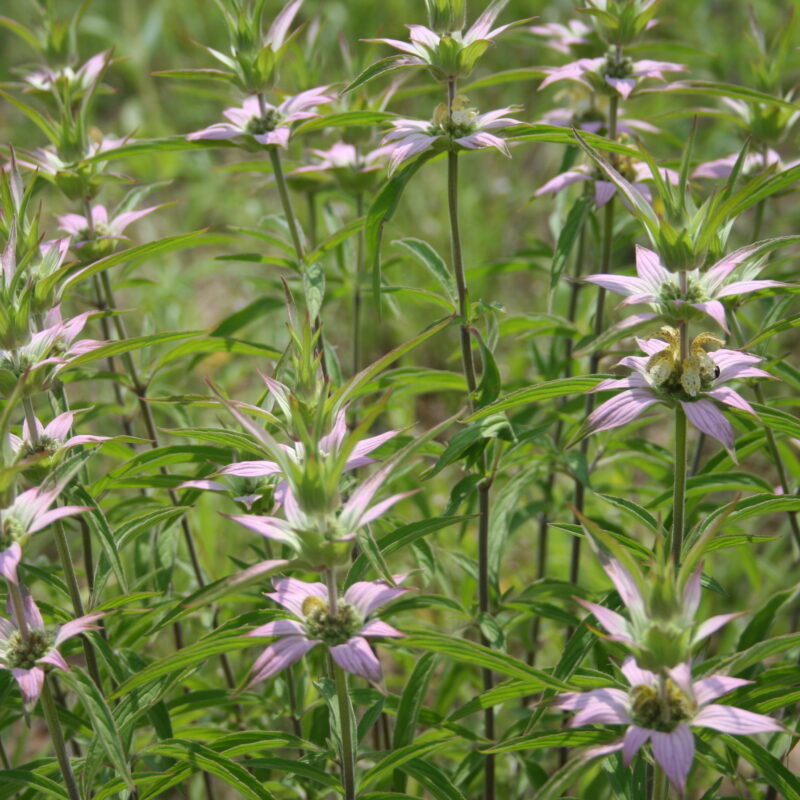Spotted Bee BalmMonarda punctata
Spotted Bee Balm or Horsemint can thrive in both heavier and sandy soils. It is more drought and sun tolerant compared to other bee balm species. A pollinator favorite.
USDA symbol: MOPU
General Information
| Plant Type | Forb |
|---|---|
| Height | 2 to 3 feet |
| Light Exposure | Sun |
| Soil Moisture | Dry |
| Bloom Color | Purple |

Tolerances
| Flooding / Inundation Tolerance | Low |
|---|---|
| General Resilience | 5 |
| Salt Tolerance | Low |
| Stress Tolerance | Drought Tolerant, General Disturbance |
Pollinator Value: Very High
| Bloom Months | July to September |
|---|---|
| Larval Host of | Bees, Moths |
| Specific Pollinators Hosted | Anterastria teratophora, Dufourea monardae, Perdita gerhardi, Pyrausta generosa, Pyrausta signatalis |
| Pollinator Benefit | Insect Pollinated, Provides Nectar, Stem Nesting |
Project Planning
| Project Type | Boulevard, Rain Garden, Shoreline Buffer |
|---|---|
| Coefficient of Conservatism | 4 |
| Herbivore Sensitivity | Low |
| Lifespan | Perennial |
| Rate of Spread | Medium |
| Soil Stabilization | Deep |
| Vegetative Reproduction | Clonal |
Range
| County | Anoka, Benton, Chisago, Fillmore, Houston, Isanti, Sherburne, Wabasha, Washington, Winona |
|---|---|
| Ecoregion | Driftless Area, Lake Agassiz Plain, North Central Hardwood Forests, Northern Lakes and Forests, Western Cornbelt Plains |
| Approximate Eco Province | Eastern Broadleaf Forest, Laurentian Mixed Forest, Prairie Parkland, Tallgrass Aspen Parklands |
